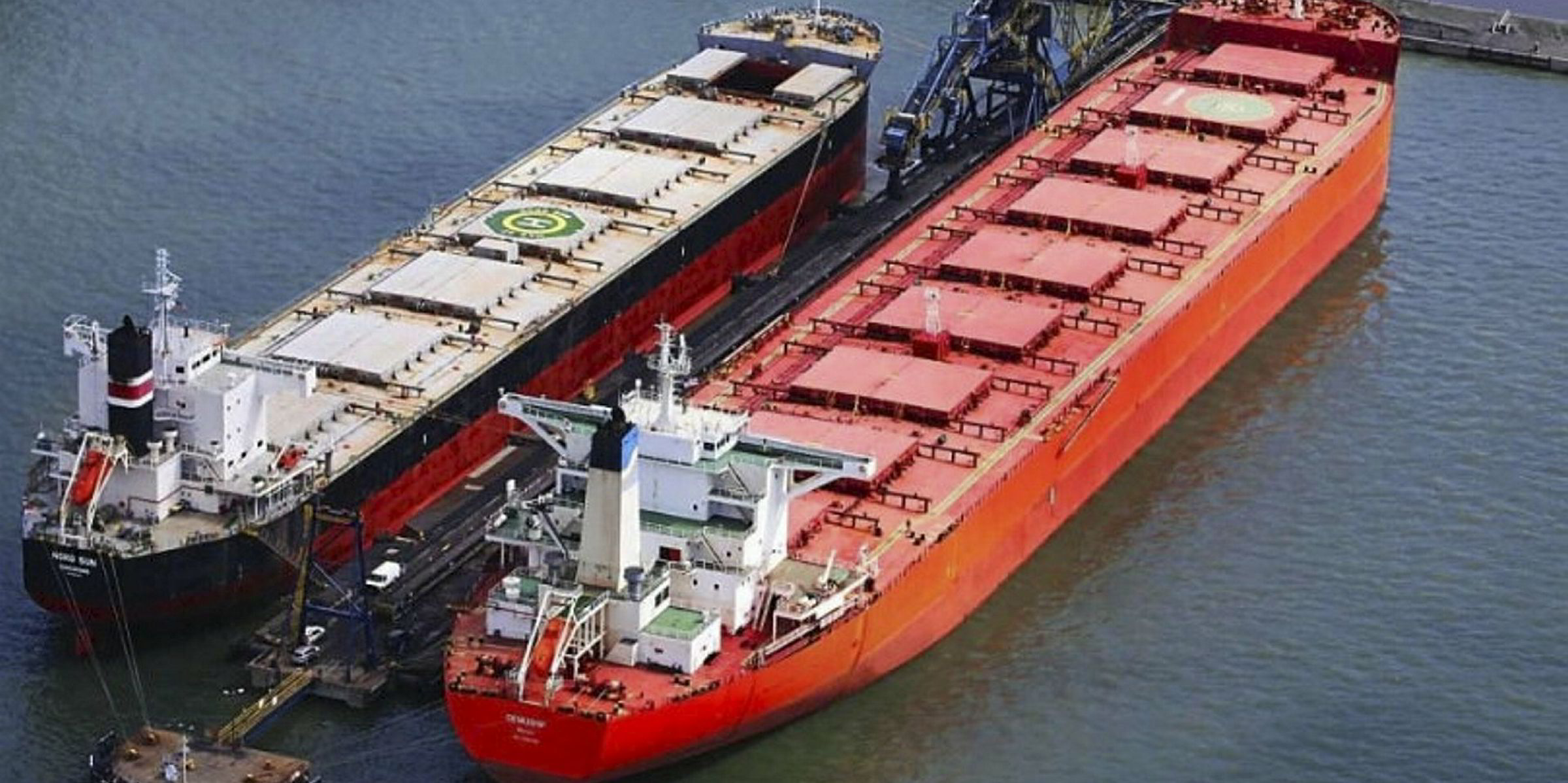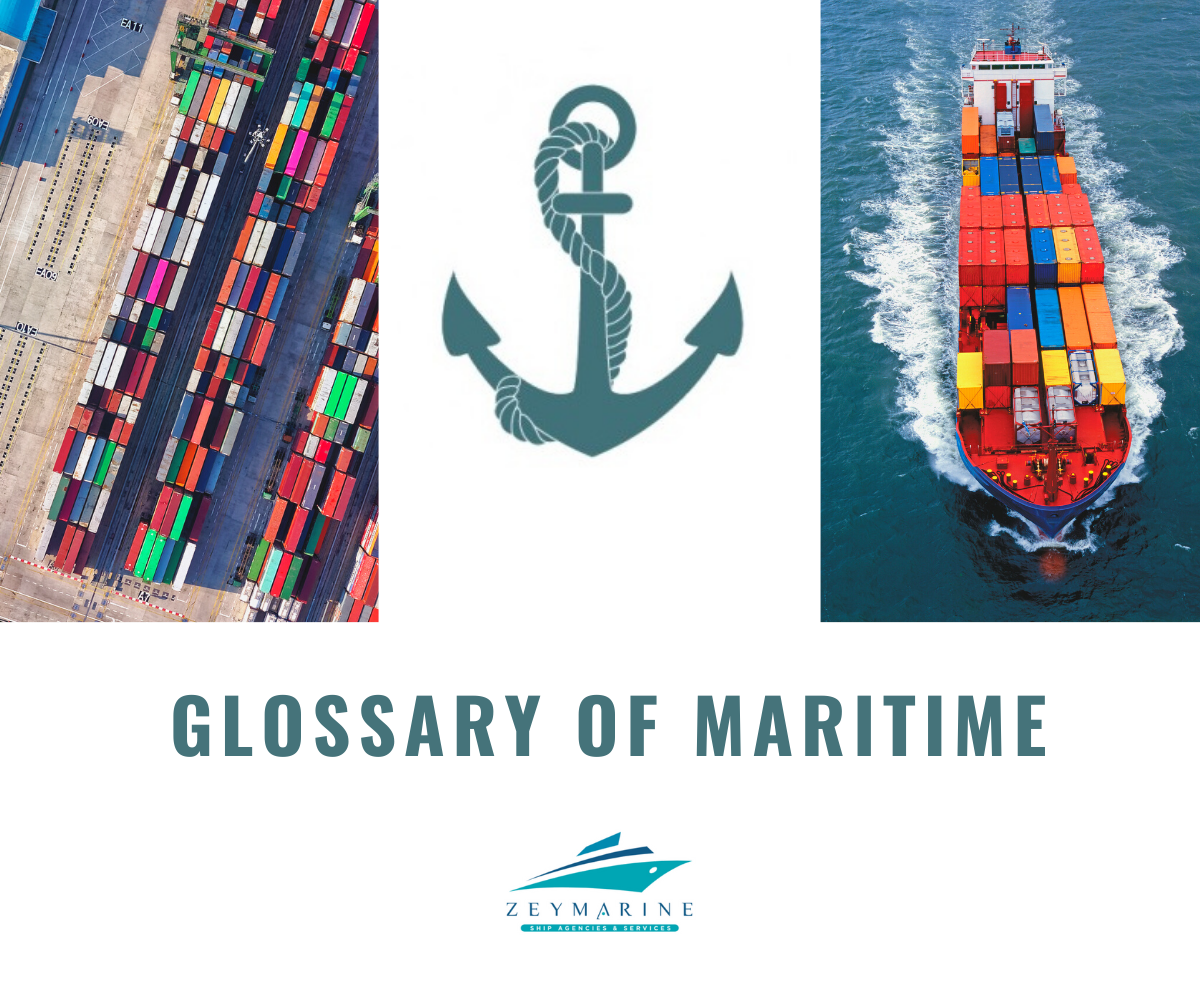There are hundreds of special words belonging to the maritime sector. The glossary of nautical terms covers ports, ships, agents and seafarers. Most of the words presented are a compilation from the internet and our daily work experiences.
Aframax: A term used for the largest dry bulkcarriers.
Aft: At or towards the stern of a vessel.
All hands: The entire crew.
Alleyway: A vessel’s internal passageway or corridor.
Amidships: Midway between port and starboard sides of a vessel.
Anchor: A heavy steel device so shaped as to grip the sea bed to hold a vessel or offshore installation in a desired position.
Ballast: It is a material placed in a vessel not carrying cargo to obtain or maintain proper stability, trim or draft.
Barge: A craft of full body and heavy construction designed for the carriage of cargo but having no machinery for self-propulsion.
Barnacle: Small marine growth which attaches itself to a vessel’s hull in large numbers.
Beam: The registered breadth of a vessel, measured at the outside of the hull amidships, or at its greatest breadth
Becalmed: A sailing vessel dead in the water due to lack of wind.

Capesize: A term applied to large cargo vessels that can not transit either the Panama or Suez Canals. They are usually of the order of 120 000–180 000 DWT.
Casingb: The extra case or bulkhead built around the ship’s funnel to protect the decks from heat.
Clearance: The size beyond which vessels, cars, or loads can not pass through, under, or over bridges, tunnels, highways, and so forth.
Coils: A system of small diameter pipes installed inside a liquid cargo tank for the purpose of heating the cargo by means of hot oil or steam.
Davit: A curved metal spar for handling a boat or other heavy obcts.
Deadman: An object, such as an anchor, piling, or concrete block, buried on shore.
Deck house: A small house on the after or midship section of a vessel.
Derelict: A vessel obandoned and drifting aimlessly at sea.
Endurance: Maximum time period (indicated in hours or days) that a vessel can operate unreplenished while performing its intended role.
Ex-pipe: It is sed to describe a mode of delivery for marine fuels, or bunkers, to ships. The fuel is delivered directly to the ship at the load or discharge terminal from a pipe.
Feeder service: Transport service whereby loaded or empty containers in a regional are transferred to a “mother ship” for a long-haul ocean voyage.
Fore: The head (or front) of the ship.
Freeboard: The vertical distance measured on the vessel’s side amidship from the water line to the upper side of the main deck.
Freighter: A ship designed to carry all types of general cargo, or “dry cargo.”
Galley: Kitchen compartment aboard a vessel.
Gangway: The opening in the bulkwarks of a vessel through which persons come on board of disembark.

Handymax Bulk Carrier: The bulkers are well suited for small ports with length and draught restrictions, or ports lacking transshipment infrastructure.
Handysize Bulk Carrier: are small-sized ships with a capacity ranging between 15,000 and 35,000 DWT. These vessels are ideal for small as well as large ports, and so make up the majority of ocean cargo vessels in the world.
Heel: Inclination of a vessel to one side.
Helm: A term applied to the tiller, wheel, or steering gear, and also the rubber.
Innage: A measurement of liquid cargo in a tank. It is the distance from the top of the cargo to the bottom of the tank.
Jack Tar: Sailors were once called by their first names only, and Jack was their generic name. Tar came from seamen’s custom of waterproofing clothing using tar.
Knot: One nautical mile per hour (1.852 km/h, 0.5144 m/s).
Labor: A vessel is said to labor when she works heavily in a seaway
Linesmen: He is esponsible for all mooring and casting off operations for ships calling at Port.
Landlubber: The seaman’s term for one who does not go to sea.
Lifeboat: Rigid-hulled survival craft deployed from a parent vessel.
Manifold: It is he loading and discharging connections of a tanker, usually located near the midship section.
Maroon: To put a person ashore with no means of returning.
Mother Carey’s chickens: Small birds that foretell bad weather and bad luck.
Nautical mile: Unit of distance used in marine navigation
Oiltight: Having the property of resisting the passage of oil.
Outturn Weight: The delivered weight of the cargo, which is determined after discharge.
Pale: One of the interior shores for steadying the neams of a ship while building.
Palm and needle: A seaman’s sewing outfit for heavy work.
Pass the word: Repeat an order for information to the crew.
Pay off: To turn the bow away from the wind; to pay the crew.
Plimsoll mark: The primary loadline mark which is a circle intersected by a horizontal line accompanied by letters indicating the authority under which the loadline is assigned.
Quarter: That portion of a vessel’s side near the stern.
Quarters bill: A vessel’s station bill showing duties of crew.
Reef: To reduce the area of a sail by making fast the reef points
Relay: To transfer containers from one ship to another.
Research vessel: Vessel designed for oceanographic or fisheries research.
Rig: A general description of a vessel’s upper works to fit out.
Roll: Motion of the ship from side to side, alternately raising and lowering each side of the deck
Salvage: To save a vessel or cargo from total loss after an accident; recompense for having saved a ship or cargo from danger.
Scuppers: Openings in the side of a ship to carry off water from the waterways or from the drains.
Sea dog: An old sailor.
Shoal: A revolving rod that connects the Propeller and the engine to power the ship.
Ship chandler: An individual or company selling equipment and supplies for ships.
Shot: A short length of chain, usually 15 fathoms
Side lights: The red and green running lights, carried on the port and starboard sides respectively, of vessels under-way.
Tank top: The plating laid on the bottom floors of a ship, which forms the top side of the tank sections or double bottom.
Trim: The balance of a ship or an aircraft. On a ship this is the way it floats ion the water in relation to the fore and aft line.
Ullage: The depth of the free space left in tanks above the liquid.
Underway: Said of a vessel when not at anchor, nor made fast to the shore, or aground.
Vessel manifest: Declarations made by international ocean carriers relating to the ship’s crew and contents at both the port of departure and arrival. All bills af lading are registered on the manifest.
Waterline: The line painted on the side of the vessel at the water’s edge to indicate the proper trim.
Watertight door: A door so constructed that, when closed, it will prevent water under pressure from passing throught.
Weather deck: Uppermost hull deck exposed to the weather at all times.







